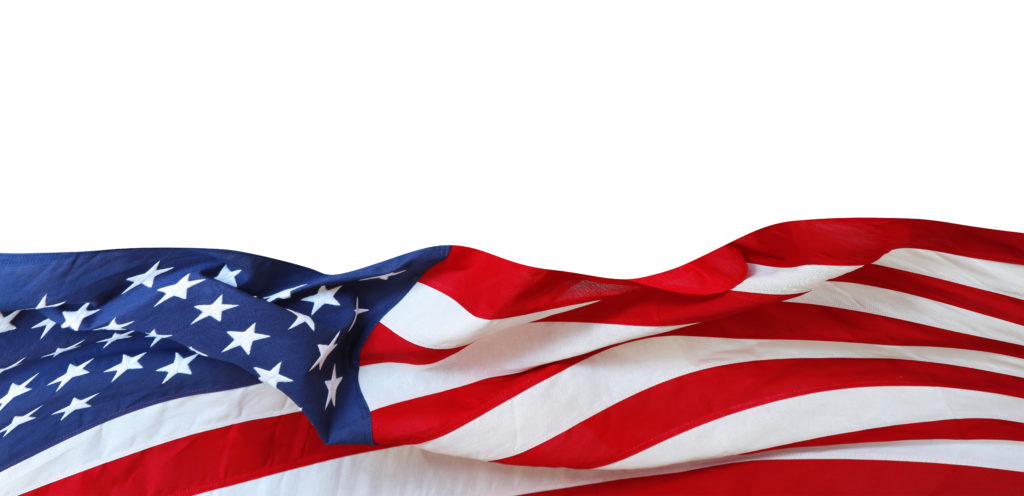What is First Sale
First Sale for Exportation to the U.S
What is the First Sale Rule?
Where there are multiple sales of goods prior to their importation into the United States, the First Sale rule allows importers, in certain circumstances, to use the price paid in the “first or earlier sale” as the basis for the customs value of the goods rather than the price the importer ultimately paid for the goods.
Which is the “first or earlier” sale?
A series of sequential sales, common in import transactions, consists of two or more successive contracts for sales of goods (multi-tiered transaction). One example is where the import transaction involves a sale between the foreign manufacturer and a foreign intermediary and another between a foreign intermediary and a U.S. buyer. In a series of sequential sales, any sale occurring earlier than the last sale prior to the introduction of the merchandise into the United States would be considered a “first or earlier” sale. In the above example, the sale between the foreign intermediary and the U.S. buyer is considered the last sale prior to the introduction of the merchandise into the United States. The sale between the manufacturer and the foreign intermediary is the “first or earlier” sale.
Under U.S. law, the preferred method of valuing imported merchandise for customs purposes is the transaction value of the goods sold. When such transaction value is required and the goods are sold more than once before they are actually imported (e.g., in sales involving middlemen), the First Sale rule allows an earlier sale to be used in declaring customs value as long as that sale can be documented as a sale for exportation to the United States and the importer meets all other Customs requirements.
In-Depth Coverage: Customs Valuation
Because the value attributable to earlier sales may be lower than that assigned to later sales, the use of the First Sale rule can lower the duties paid by importers.
For example, a foreign manufacturer produces and sells goods at the price of $1,000,000 to a middleman outside the US and the middleman, in turn, sells these goods to an importer in the US with a 10 percent markup at the price of US$1,100,000. If the tariff rate is 10% for the goods, the duty paid will be $110,000 using the last sale price of US$1,100,000. By using the first sale price of $1,000,000, the duty paid will be $100,000. In this scenario, the importer can save $10,000. If the tariff rate is 25%, the saving would be $25,000.
Usually, importers use the First Sale rule when there are high duty rates, high intermediary markup, or high free on board (FOB) volumes in the transaction.
The importers must meet several requirements in order for duty to be assessed based on the first sale. Specifically, the transactions must be (1) bona fide sales, (2) the goods must be destined for export to the U.S. at the time of the first sale, and (3) the foreign manufacturer and middleman must either be unrelated or conduct their transactions at arm’s length.
Bona Fide Sales
The first requirement for First Sale is that there must be two bona fide sales. When at least two bona fide sales have occurred and the same party serves as a buyer (usually buying the imported merchandise from a foreign manufacturer) as well as a seller (usually selling the imported merchandise purchased from a foreign manufacturer to a U.S. importer or consignee) in a multi-tiered transaction, that party is considered to be a middleman.
A “sale” is defined as the transfer of property from one party to another party for consideration. Although several factors may indicate whether a bona fide sale has taken place between a potential buyer and seller of imported merchandise, no single factor is determinative. Rather, the relationship of the parties involved in the transaction is to be evaluated by an overall view of the entire situation, with the result in each case governed by the facts and circumstances of the individual case—and not by the labels that the parties may attach to the relationship.
In-Depth Coverage: Country of Origin
- Country of Origin of Imported Merchandise
- Customs Ruling: Country of Origin
- Country of Origin: Food Products
- Country of Origin: Chemical and Pharmaceutical Products
- Country of Origin & Country of Manufacture: CBP vs. FDA
- Country of Origin: Substantial Transformation or Country of Assembly Test
- Country of Origin and Free Trade Agreement
- Country of Origin and Section 301
What factors indicate whether property or ownership in property was transferred?
In determining whether property or ownership in property has been transferred from a potential seller to a potential buyer, CBP considers whether the potential buyer has assumed the risk of loss for the imported merchandise (i.e., the potential buyer was liable for the imported merchandise if lost or damaged during shipment) and acquired title to the imported merchandise (i.e., the potential buyer legally possesses or owns the imported merchandise).
In addition, CBP may examine whether the potential buyer paid for the merchandise (i.e., consideration passed between the potential buyer and seller for the imported merchandise).
Transactions involving goods that are shipped on consignment do not constitute bona fide sales because the goods are not the subject of a sale. Therefore, the transaction value method of appraisement cannot be used to appraise goods shipped to the United States on consignment.
Other examples where imported goods are not considered to be the subject of a bona fide sale include gifts, samples and promotional items furnished free of charge; goods imported under a leasing contract; and goods that were loaned. The transaction value method cannot be used to appraise such goods. Therefore, an alternative method of appraisement must be used in such situations.
In-Depth Coverage: Importing Cosmetics
What significance is afforded to shipping or trade terms?
In situations where no other pertinent evidence has been made available, CBP may reach its determination concerning whether a bona fide sale occurred based on the terms of sale (e.g., FOB or CIF), indicating when title and risk of loss were transferred. Otherwise, the terms of sale will be considered as part of the overall view of the entire situation in conjunction with all other relevant evidence. CBP primarily will consider as controlling the terms of sale provided on the invoices and written contracts or agreements regarding the sale of the merchandise. The meaning of all such shipping or trade terms will be construed consistent with the “Uniform Commercial Code” and “Incoterms 2000” (the official International Chamber of Commerce rules for the interpretation of trade terms), unless the transacting parties demonstrate through contracts, other legally enforceable agreements, or course of dealing, that they have afforded different meanings to the terms.
What evidence or documentation, other than shipping or trade terms, indicates whether a bona fide sale has occurred?
Contracts, distribution and other similar agreements, invoices, purchase orders, bills of lading, proof of payment, correspondence between the parties, and company reports or brochures all may serve as evidence that a party possesses title in and assumed the risk of loss for the imported merchandise and functions as a buyer or a seller, thus indicating that a bona fide sale has occurred with respect to the transaction under consideration.
Documentary evidence to support bona fide sales includes contracts, distribution and similar agreements, invoices, purchase orders, bills of lading, proof of payment, correspondence between the parties, and company reports or brochures.
Goods destined for export to the U.S.
Once it has been established that a bona fide sale of merchandise has occurred, the second requirement is that the goods must be clearly destined for export to the U.S. at the time of the first sale. In situations where more than one sale has occurred involving the imported merchandise and the importer wants to base transaction value on the price actually paid or payable in a sale to which it is not the buyer (e.g., the price paid for the merchandise in a sale between the foreign manufacturer and a foreign middleman), the importer must be able to establish by documentary evidence that such a sale is a sale for exportation to the United States.
In-Depth Coverage: Importing Medical Device
When is merchandise clearly destined for exportation to the United States in a multi-tiered transaction?
Although such a determination can only be made on a case-by-case basis, CBP will consider that merchandise is clearly destined for exportation to the United States in a multi-tiered transaction when the evidence establishes that at the time the middleman purchased or contracted to purchase the imported merchandise from the foreign manufacturer, the only possible destination for the merchandise was the United States (i.e., at the time of sale, the imported merchandise was irrevocably destined for the United States).
It must be evident throughout the entire transaction that the merchandise is clearly destined for exportation to the United States. It is not sufficient, for example, to show after the merchandise was ordered and manufactured, at the time of shipment, near the end of the transaction, that it will be or was going to the United States.
For instance, evidence that boxes for imported merchandise (e.g., table lamps) were addressed to the United States when delivered to a carrier is insufficient by itself to establish that the lamps were clearly destined for exportation to the United States.
On the other hand, evidence that a U.S. retailer/importer had contracted for table lamps with a middleman who, in turn, had contracted with a foreign manufacture for table lamps that were manufactured to conform to U.S. electrical requirements and the U.S. retailer’s design specifications (e.g., shape, materials, colors); bore the U.S. retailer’s labels, logos, unique stock numbers and bar codes; and were shipped directly from the country of manufacturer to the United States (thereby eliminating the possibility of diversion of the merchandise to another country) would show that the imported table lamps were clearly destined for exportation to the United States at the time the middleman purchased or contracted to purchase the lamps from the foreign manufacturer.
What evidence is needed to establish that merchandise is clearly destined for exportation to the United States in a multi-tiered transaction?
In order to establish that merchandise is clearly destined for exportation to the United States in a multi-tiered transaction, there must be a complete paper trail relating to the imported merchandise that shows the structure of the entire multi-tiered transaction. This would include invoices, sales contracts, purchase orders, proof of payment, shipping contracts or other documentation for each individual transaction involved in the multi-tiered transaction with consistent prices, dates, parties and merchandise. Other evidence would include manufacture, design, and other unique specifications or characteristics of the merchandise (often manifest in samples) made in conformity with the U.S. buyer's or importer’s standards; labels, logos, stock numbers, bar codes and other unique marks; and markings, visas, warranties or other types of certification or characteristics required for the entry into and sale or operation of the imported merchandise in the United States. All this evidence must show that the only possible destination for the imported merchandise was the United States at the time the middleman purchased or contracted to purchase the merchandise from the foreign manufacturer.
In-Depth Coverage: Importing Food Products
- What is FDA Food Safety Modernization Act (FSMA)?
- Prior Notice of Imported Foods
- FDA Food Facility Registration
- Risk-Based Preventive Controls for Human Food
- Risk-Based Preventive Control for Animal Food
- Protect Food against Intentional Adulteration
- What is Foreign Supplier Verification Program (FSVP)?
- What is FSMA Produce Safety Rule?
At arm’s length First Sale Transactions Between Manufacturer and Middleman
When is a sale considered to have been conducted at “arm's length”?
In general, CBP will consider a sale between unrelated parties to have been conducted at “arm's length.” If the parties are related, however, a sale will be considered to have been conducted at “arm's length” only (1) if an examination of the circumstances of the sale of the imported merchandise indicates that the relationship between the buyer and seller did not influence the price actually paid or payable or (2) if the transaction value closely approximates a test value.
To make such a determination Customs considers evidence such as production orders and/or manufacturing instructions and other unique specifications of the merchandise to conform to the buyer’s standards; examples of labels, logos, stock numbers, barcodes and other unique merchandise or carton marks; and examples of country of origin marking on finished goods, hang tags, etc., any warranty cards provided, or other types of certification required for entry and/or sale of the goods in the U.S.
What is the relevance of whether a sale is conducted at “arm's length” and is “clearly destined for exportation to the United States”?
If a sale was not conducted at “arm's length” or the merchandise that was the subject of the sale was not “clearly destined for exportation to the United States,” that sale cannot serve as the basis for transaction value.
The court [1] held that the foreign manufacturer's price was a valid transaction value as long as the transaction between the foreign manufacturer and the middleman was a sale negotiated at “arm's length” that was free from any non-market influences that could affect the legitimacy of the sales price and involved goods clearly destined for exportation to the United States. This presupposes that a bona fide sale occurred and that the use of transaction value is not otherwise precluded by the U.S. valuation law (e.g., there are no restrictions on the disposition or use of the merchandise; there are no conditions or considerations for which a value cannot be determined; or there is insufficient information concerning an enumerated statutory addition to the price actually paid or payable).
In-Depth Coverage: USDA-Regulated Products
- Importing USDA-Regulated Food Products
- Import Regulation by USDA Agricultural Marketing Service (AMS)
- Food Products – FDA or USDA Regulated
- Country of Origin Labeling
- Importing Animals, Animal Products, and Biologics into the US
- Importing Meat, Poultry, and Egg Products into the US
- Labeling and Marking of Imported Meat, Poultry, and Egg Products
- USDA National Organic Program (NOP)
- Agricultural Safeguards and USDA Licensing
What are the requirements for first sale between the middleman and the manufacturer to be qualified as an acceptable basis for appraisement of the subject merchandise?
The courts [1 ,2] reviewed the standard for determining transaction value when there is more than one sale which may be considered as being a sale for exportation to the United States. Both cases involved a foreign manufacturer, a middleman, and a United States purchaser.
In each case, the court held that the price paid by the middleman/importer to the manufacturer was the proper basis for transaction value. Each court further stated that in order for a transaction to be viable under the valuation statute, it must be a sale conducted at arm’s length, free from any non-market influences, and involving merchandise clearly destined for export to the United States at the time of the first sale.
In accordance with the court decisions above CBP presumes that transaction value is based on the price paid by the importer. In further keeping with the courts’ holdings, CBP notes that an importer may request appraisement based on the price paid by the middleman to the foreign manufacturer in situations where the middleman is not the importer. However, it will be the importer’s responsibility to show that the “first sale” price is acceptable under the standard set forth in Nissho Iwai and Synergy.
[1] Nissho Iwai American Corp. v. United States, 982 F.2d 505 (Fed. Cir. 1992)
[2] Synergy Sport International, Ltd. v. United States, 17 C.I.T., Slip OP. 93-5 (Ct. Int'l. Trade January 12, 1993)
Quick Link To U.S. Customs & Import Requirements
Customs Clearance and Import Requirements
- Entry of Imported Merchandise
- What is Section 321 Entry?
- What is Automated Commercial Environment (ACE)
- What is an Automated Broker Interface (ABI)?
- Who is Ultimate Consignee?
- What is Non-Resident Importer Program?
- Country of Origin of Imported Merchandise
- What is the Country of Assembly?
- What if the FDA's Country of Manufacture?
- Marking of Country of Origin on U.S. Imports
- What is Customs Bond?
- Reconciliation Prototype and Bond Rider
- Who Needs a Customs Broker?
- What is Customs Ruling Program?
- Classification of Imported Goods
- How is imported merchandise appraised?
- What are Import Quotas?
- What are Trade Remedy Duties?
- Antidumping Duty (AD) and Countervailing Duty (CVD)
- What is Foreign Trade Zone (FTZ)?
- What is Importer Security Filing (ISF)?
- What is Temporary Importation under Bond (TIB)
- What is In-Bond Process?
Guidance on customs & logistics solution for traditional and e-commerce importers and exporters
Importer Security Filing (ISF)
An ISF is required when cargo (ocean only) laden on vessel at a foreign port is destined for shipment to the U.S. Under ISF rule, some importing information and details regarding cargo must be transmitted to the CBP at least 24 hours before goods are loaded onto the vessel, or at least 24 hours prior to the departure to the U.S.
Freight Forwarding
Looking for a freight forwarding partner? To move your cargo from its current location through customs to its final destination we will partner with you to find the best way for your business. Whatever your transportation, logistics or customs clearance needs, we will do our best to customize a solution for your needs.
Customs Clearance
All goods imported into the customs territory of the U.S. are required to be declared to CBP. Our customs broker will help you stay in compliance with customs laws and regulations and clear your goods quickly and efficiently with our electronic Automated Commercial Environment (ACE) and Automated Broker Interface (ABI) Single Window System.
Section 321 Entry
Section 321 entry allows importing free of duty and tax for shipments imported by one person on one day having a fair retail value in the country of shipment not more than $800. We provide our resident and non-resident clients with dedicated ACE eManifest solutions for Section 321 entry of all modes of transportation.
Non-resident Importer Program
If you want to sell your products in U.S. marketplaces, but you are a business owner located outside of the U.S. and do not have an entity or presence in the U.S., you need to be established as a Foreign Importer of Record before your products can be imported into the U.S. We can help you.
E-Commerce
The Internet has made it easy to find and purchase items from almost anywhere in the world. Our e-commerce experts will help you find the right solution for your international transportation, customs clearance, and delivery to your final destination. We also provide value-added repackaging, warehousing and distribution services.
















